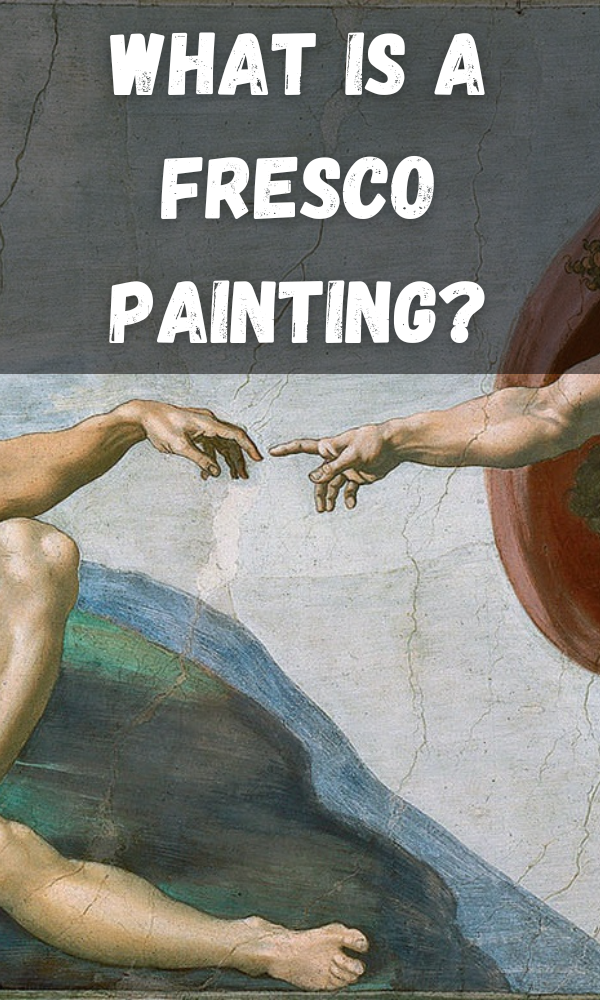What is a Fresco Painting?
Fresco is a mural painting method that is applied on newly laid ("Wet") plasterboard. Water is used to help the parched pigments blend with the plaster, and once the plaster has set, the artwork becomes a permanent part of the structure.
The term fresco (Italian: affresco) comes from the Italian adjective fresco, which means "Fresh," and can be juxtaposed with fresco-secco or secco panel painting techniques, which are used to complement fresco art over hardened plaster.
The fresco method has been used since ancient times and is significantly linked with renaissance art in Italy. In English, the term fresco is widely and incorrectly applied to any large painting, independent of the plaster method or bonding substance.
What does fresco painting imply?
A fresco is a form of artwork on a wall, placing a plaster on the surface of a wall while still wet.
What is a fresco painting example?
The Sistine Chapel ceiling and the Last Judgment are two of the most famous fresco paintings from the Italian renaissance.
How do you tell if a painting is a fresco?
Fresco is an old art form that is seen on walls. The pigments are thick and the surface has a flat look.
Fresco mural artworks are extremely long-lasting, with some dating back hundreds of years to the ancient period of Pompeii and Crete.
When did fresco paintings first appear?
The famous Egyptian fresco was discovered in Hierakonpolis' tomb 100, and it was dated to around 3500–3200 bc.
Who is the inventor of fresco painting?
The first inventor of fresco art is unknown, it was used by the Minoans and the classic Romans.
100 MOST FAMOUS PAINTINGS IN THE WORLD
Styles of fresco
The three most popular fresco forms are buon, secco, and mezzo.
Buon
The painter works directly upon newly mixed plaster to create a buon ("Genuine") fresco.
The color used to create a buon fresco doesn't have to include a bonding component because of the inherent point of the wet intonaco; therefore, it can merely be combined with water.
Secco
A secco ("Dry") fresco, on the other hand, uses parched plaster as its medium. The colors must be blended with a binding substance, such as a glue bond or egg yolk, to help the paint adhere to the plaster.
Mezzo
On usually dry intonaco, a mezzo ("Middle") fresco is produced. This form of fresco become prominent during the renaissance, ultimately overtaking buon fresco in appeal.

Fresco painting in the Italian renaissance
Through the Italian renaissance, fresco art reached its pinnacle, and most of the best works are still in great condition present day. Italian frescoes painted themes out from the bible or martyrs' journeys on the surfaces of governmental and non-governmental structures, as well as Christian churches.
Gold leaf was fashionably used with fresco paintings throughout the early renaissance, when it was used to elaborately cover walls with a beautiful glossy finish, as seen in Giotto di Bondone's Scrovegni chapel, 1305.
Fresco paintings throughout the world
Frescos were used to decorate houses, monasteries, and churches in ancient Greek and Rome. Some were even saved from the Pompeii explosion and have subsequently been discovered. Frescoes were prevalent throughout the middle ages, but they resurfaced throughout the renaissance.
Fra Angelico's The Annunciation was one of the earliest great renaissance fresco paintings. The last supper by Leonardo da Vinci is among the most iconic secco frescos. To brighten the hues in the fresco, Leonardo applied a white lead coating during the first two coats of plaster.
The secco method gave him additional time to finish the fresco, but it also increased the artwork's degenerative transformation. It has had to be renovated several times and is now only a remnant of its original condition.
Today's fresco painting
Although fresco art is not as popular as it once was, some painters appreciate and experiment with the form.
The creation of a fresco became famous again thanks to Mexican artist Diego Rivera, who was immersed in Marxist beliefs and depicted ideologies in his fresco paintings. During the 1930s, Rivera painted a series of fresco paintings along San Francisco bay.
Francesco Clemente, an Italian-American artist, is another modern fresco artist who has created frescos that combine classic methods with modern themes. Clemente painted the Avo Ovo in Madrid in 2005, in which he combines his personal experiences with Neapolitan tradition.



